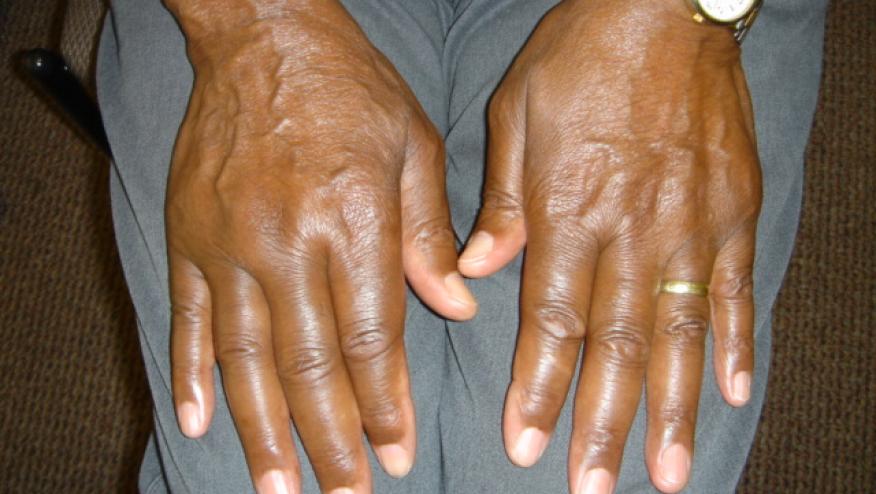Economic, Personal Burden of RA: Maybe Not So Bad? Save

Data from a major federal survey indicate that people with rheumatoid arthritis (RA) don't pay massively more for healthcare than other folks, nor is their risk for functional deficits tremendously greater, researchers found.
True, average annual healthcare expenditures in 2018-2020 ran about $3,400 more for people with RA than for the general population after adjusting for covariates, and health status measures were significantly worse, according to Yinan Huang, MS, PhD, of the University of Mississippi in University, and colleagues.
But the degree of difference was not as great as might be expected, the group's report in ACR Open Rheumatology suggested.
One previous study had found average annual healthcare expenses above $30,000 for those with private insurance, and another showed that Medicare paid some $14,000 more for RA patient care than for other beneficiaries. But Huang and colleagues noted that these were relatively select groups -- mostly elderly patients on Medicare, and mostly employed people with private insurance. "There is a dearth of data on the overall health expenditure impact in U.S. patients with RA across all types of payers," Huang and colleagues wrote.
They therefore turned to the federal Medical Expenditure Panel Survey, with about 12,000-14,000 households and 25,000-35,000 individual respondents each year, which asks about healthcare issues and expenses and cross-checks the responses with participants' healthcare providers. About 1.7% of respondents in the 2018-2020 data had RA.
Importantly, Huang and colleagues adjusted for participants' demographic and other variables in their statistical comparisons. Without adjustments, the results generally matched findings from earlier studies: mean total healthcare costs for RA patients in the MEPS data were $24,068, compared with $8,381 for non-RA individuals.
But RA patients in the sample were much older -- 45% were 65-plus and 40% were 50-64, versus 21% and 24%, respectively, in the non-RA sample. Women predominated in the RA group, and twice as many RA patients had not graduated from high school as compared with the non-RA group. RA patients were more likely to live in poverty and to have multiple comorbidities.
Thus, adjusting for these differences left a much smaller gap in annual expenses: $3,383, with prescription drugs accounting for two-thirds of that. There was little to no difference in some expense categories including hospital admissions, home healthcare, and emergency department visits.
Similarly, unadjusted data indicated markedly worse health status for the RA group. Mean scores on the Short Form-12 inventory's physical component were 31.31 for people with RA versus 39.05 for those without the condition. About 10% of the RA group reported seeking help with physical activities of daily living (ADL), compared with less than 2% of non-RA respondents. Some 15% of those with RA sought help with "instrumental" ADL (primarily mental tasks such as shopping, paying bills, and taking medications) versus 3% of the non-RA group.
But again, adjusted analyses suggested smaller gaps. Huang and colleagues calculated odds ratios of 2.02 (95% CI 1.59-2.56) for seeking help with physical ADL and 2.11 (95% CI 1.57-2.84) for seeking help with instrumental ADL. This doubling in odds must be viewed in the context of the absolute risk, which was that a large majority of RA patients didn't think they needed such assistance.
The researchers themselves, it must be noted, did emphasize that RA is far from a benign condition both economically and in terms of personal burden, that it does come with substantial extra monetary costs and functional impairments for patients. But they put most of the blame for the economic burden on the cost of prescription drugs.
"Prescribers should evaluate the [health-related quality of life] impact in prescribing treatment to adults with RA. Managed care professionals and payers should be aware of the high expenditures of RA due to high-cost prescription medications," the group wrote.
Source Reference: Huang Y, et al "Economic and humanistic burden of rheumatoid arthritis: results from the U.S. national survey data 2018–2020" ACR Open Rheumatol 2024; DOI: 10.1002/acr2.11728.










If you are a health practitioner, you may Login/Register to comment.
Due to the nature of these comment forums, only health practitioners are allowed to comment at this time.